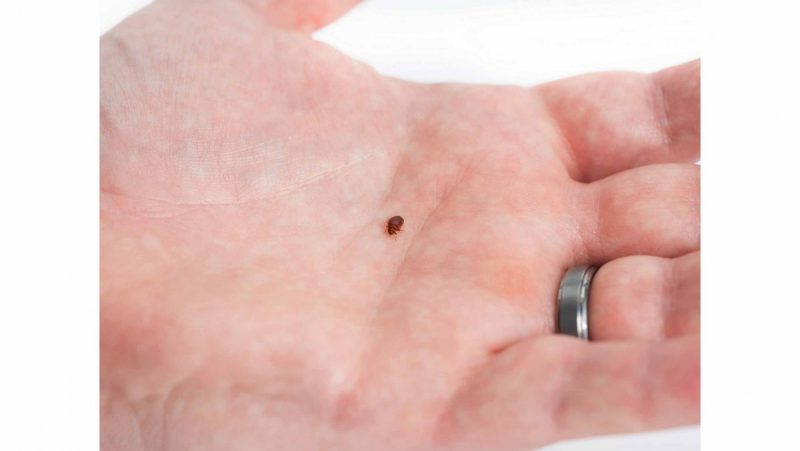Where the Bed Bugs Roam
Washington, D.C. beat Baltimore this year for the top spot on Orkin's 2020 bed bug cities list
January 15, 2020


Got bugs? Many cities do, if it is bed bugs that are the target. Washington, D.C. is ringing in the new decade as the number one city on Orkin’s Top 50 Bed Bug Cities list, topping Baltimore, which fell to the second spot after three years as the frontrunner. And this year, Indianapolis joined the top of the list.
Flint saw the biggest jump moving 16 spots to number 31 after only joining the list in 2018. Pittsburgh and Champaign both broke into the top 20, and Myrtle Beach and Toledo joined the top 50 list for the first time.
The list is based on treatment data from the metro areas where Orkin performed the most bed bug treatments from December 1, 2018 – November 30, 2019. The ranking includes both residential and commercial treatments.
1. Washington, D.C.
2. Baltimore
3. Chicago
4. Los Angeles
5. Columbus, OH
6. New York
7. Detroit
8. Cincinnati
9. Indianapolis
10. Atlanta
11. Cleveland, OH
12. Philadelphia
13. San Francisco
14. Raleigh, NC
15. Norfolk
16. Champaign, IL
17. Dallas
18. Grand Rapids
19. Pittsburgh
20. Charlotte
21. Richmond, VA
22. Greenville, SC
23. Knoxville, TN
24. Buffalo, NY
25. Greensboro, NC
26. Charleston, WV
27. Denver
28. St. Louis
29. Nashville
30. Lansing
31. Flint
32. Miami
33. Milwaukee
34.Tampa
35. Omaha
36. Orlando
37. Davenport, IA
38. Houston
39. Syracuse
40. Boston
41. Cedar Rapids, IA
42. Myrtle Beach (new to list)
43. Seattle
44. San Diego
45. Phoenix
46. Fort Wayne, IN
47. Las Vegas
48. Hartford, CT
49. Dayton, OH
50. Toledo, OH (new to list)
“While bed bugs have not been found to transmit any diseases to humans, they can be an elusive threat to households,” said Chelle Hartzer, an Orkin entomologist. “They are excellent hitchhikers, and they reproduce quickly which make it nearly impossible to prevent bed bugs. Sanitation has nothing to do with where you’ll find them.”

Bed bugs, which are typically 4-5 mm in length and red to dark brown in color, can travel from place to place with ease, including luggage, purses and other belongings. Normally nocturnal, bed bugs will come out of hiding to take blood meals from sleeping or quietly resting humans.
According to the 2018 “Bugs without Borders Survey” by the National Pest Management Association (NPMA), the top three places where pest professionals report finding bed bugs are single-family homes (91 percent), apartments/condominiums (89 percent) and hotels/motels (68 percent). With that, hotels spend an average of $6,383 per bed bug incident¹.
Bed bugs are known for rapid population growth. Females can deposit one to five eggs a day and may lay 200 to 500 eggs in their lifetime. Under normal room temperatures and with an adequate food supply, they can live for more than 300 days, often making treatment challenging.
“The key to preventing a bed bug infestation is early detection,” Hartzer said. “When one or more bed bugs enter a space, we call it an introduction. During an introduction, bed bugs probably haven’t started reproducing yet, but they could soon. Vigilance is key to stopping bed bugs before infestation levels.”
Tell-tale signs of a bed bug introduction could include small black spots indicating bed bug feces or nymph bed bugs in places such as mattress seams, bed frames and furniture. Their small size and ability to hide make them difficult to see during the day, so it’s important to look for the black, ink-like stains they can leave behind.
Here are proactive tips Orkin recommends for travelers:
During travel, remember the acronym S.L.E.E.P. to inspect for bed bugs…
• Survey the hotel room for signs of an infestation. Be on the lookout for tiny, ink-colored stains on mattress seams, in soft furniture and behind headboards.
• Lift and look in bed bug hiding spots: the mattress, box spring and other furniture, as well as behind baseboards, pictures and even torn wallpaper.
• Elevate luggage away from the bed and wall. The safest places are in the bathroom or on counters.
• Examine your luggage carefully while repacking and once you return home from a trip. Always store luggage away from the bed.
• Place all dryer-safe clothing from your luggage in the dryer for at least 15 minutes at the highest setting after you return home.




